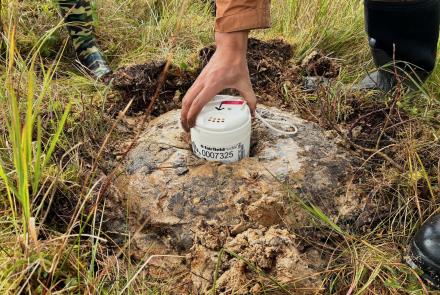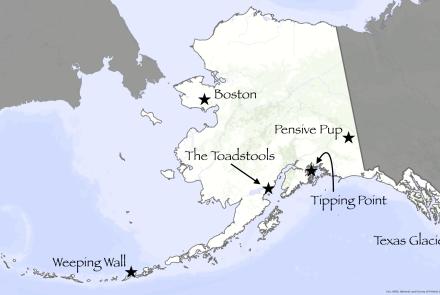The Bush gets bushier on Alaska's north Slope
For years, Matthew Sturm heard the stories from the mouths of Native elders and older scientists—the tundra of Alaska’s north slope was changing. Stunted alders, willows, and birch were encroaching on the smaller green plants that make up tundra. The invasion was happening fast enough that people noticed a difference from decade to decade, but a scientist needs more proof than a notebook full of anecdotes. Sturm, a geophysicist for the Cold Regions Research and Engineering Laboratory at Fort Wainwright, knew there must be some way to quantify the change in the tundra’s complexion.
Old photos stacked in an Anchorage warehouse were the answer. Taken by Navy photographers after World War II, the 9-by-18 inch contact prints show Arctic Alaska as if Ansel Adams had specialized in tundra. The photographers captured the North Slope as it was fifty years ago, right down to dimples in the surface.
“You could see moose prints on some photos,” Sturm said. “They were gorgeous.”
With large-format cameras mounted in the open doors of small aircraft, Navy photographers took portraits of most of the ground cover of the North Slope during the summers of 1946-1952. Geologists used the images to help them map the Naval Petroleum Reserve-Alaska. The reserve, which President Harding set aside to be tapped in times of national emergency, covers 23 million acres of tundra, lakes, and rivers north of the Brooks Range.
With the geology of the North Slope long since mapped, the Navy photos were in quiet retirement until Sturm called Greg Durocher at the USGS Earth Science Information Center in Anchorage. Durocher remembered the old Navy photographs taking up space in the warehouse and sent a few to Sturm, who called Durocher minutes after receiving them to ask for the entire set of about 5,000.
Sitting amid stacks of photos, Sturm, a geophysicist, knew he needed some help. He knows a great deal about the physics of snow, but little about plant ecology.
“The only reason I’m involved is because I thought those photos were so cool,” Sturm said.
Sturm wrote a proposal to the National Science Foundation and enlisted ecologist Charles Racine of the Cold Regions lab in New Hampshire and Ken Tape of the Geophysical Institute to help him compare the North Slope of 50 years ago with today. The funds from NSF allowed Sturm and Racine to use a helicopter to reach 66 of the old locations, from Toolik Lake to near Noatak, where the Navy photographers took shots of the North Slope.
In Fairbanks, Tape compared color slides from the summer of 2000 with the old photographs. More than half the images showed dramatic increases in alders, willows and dwarf birch.
“This is significant because this area is pretty much untouched by man, and all the climate models say a warmer Arctic means an increase in the amount and density of shrubs,” Sturm said.
Woody plants on the march may be doing more than indicating climate change. Sturm thinks shrubs may have a role in changing the soil and snow surrounding them. Shrubs capture snow that might otherwise be lost through sublimation, the evaporation that eliminates 30 percent of the snow that falls on the North Slope. Snow trapped within branches insulates the ground beneath shrubs, stimulating microbes in the soil that provide nutrients at a quicker rate than sluggish microbes in the cold tundra soil nearby.
“There’s no question that shrubs make their own little environment that’s favorable to them,” Sturm said.
Besides documenting the sneaky behavior of runt trees on the North Slope and their relationship to climate change, the old photographs help validate the “blue tarp theory” of many Alaskans: yard items that lay idle and protected today may prove useful tomorrow.



